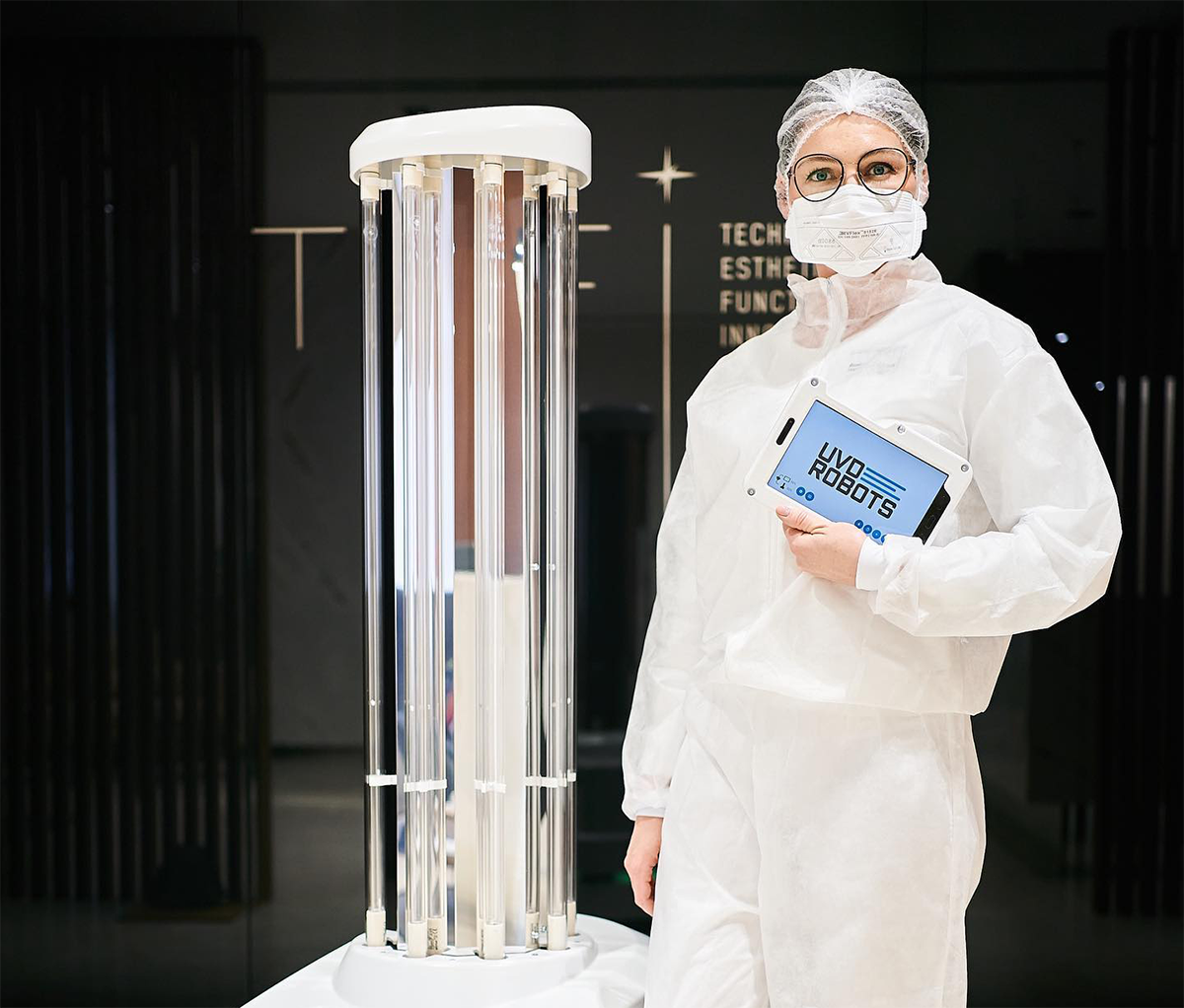Title
Content
Title
Content

Ultraviolet C, or UV-C light, is considered a powerful tool for disinfection. But why is this the case? Here are the top 3 reasons why UV-C light is an excellent disinfection technology.
UVD Robots are a series of mobile disinfection robots that use UV-C light - a type of ultraviolet light associated with high rates of disinfection against several microorganisms.
UV-C light has an especially high rate of efficacy when at wavelengths of 254 nanometers (nm). 254nm UV-C light has, in laboratory conditions, been associated with the reduction of:
UV-C light can be emitted from different devices in a process called Ultraviolet Germicidal Irradiation, or UVGI. For this, mobile technologies have been developed for UVGI.
Technologies such as UVD Robots have been developed to face obstacle-oriented issues such as distance and shadowing. As self-driving mobile robots, UVD Robots can operate autonomously, delivering UV-C light to disinfect rooms, in many cases, within 10 minutes.2
UV-C light is effective against microorganisms because it deactivates the DNA and RNA within their cell structures by disrupting the DNA and RNA repair process.3
UVD Robots use 254nm UV-C light, which similarly affects microorganisms at an intracellular level. In this way, UVD Robots can be combined with traditional cleaning and disinfection methods to deliver the most of UV-C light’s excellent disinfection properties.
Lorem ipsum dolor sit amet, consectetur adipiscing elit, sed do eiusmod tempor incididunt ut labore et dolore magna aliqua.
1. Andersen, Helle Stendahl. Analysis Report: Test of UV Disinfection Robot acc. NF T72-281. Report Number 754372_Rev. 2. Danish Technological Institute, 2020.
2. Andersen, Helle Stendahl. Analysis Report: Test of UV Disinfection Robot acc. NF T72-281. Report Number 754372_Rev. 2. Danish Technological Institute, 2020.
3. 17, August. “How Does Ultraviolet Light Kill Cells?” Scientific American, 17 Aug. 1998, www.scientificamerican.com/article/how-does-ultraviolet-ligh/.